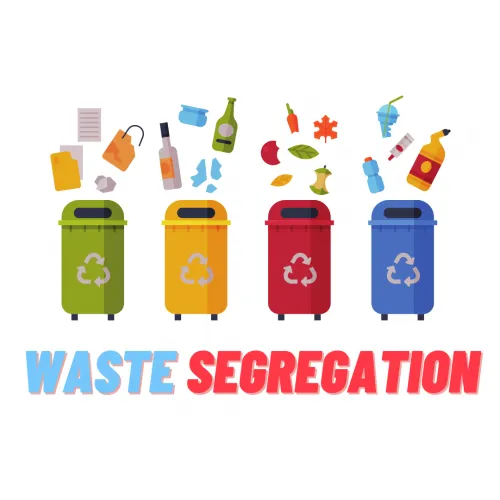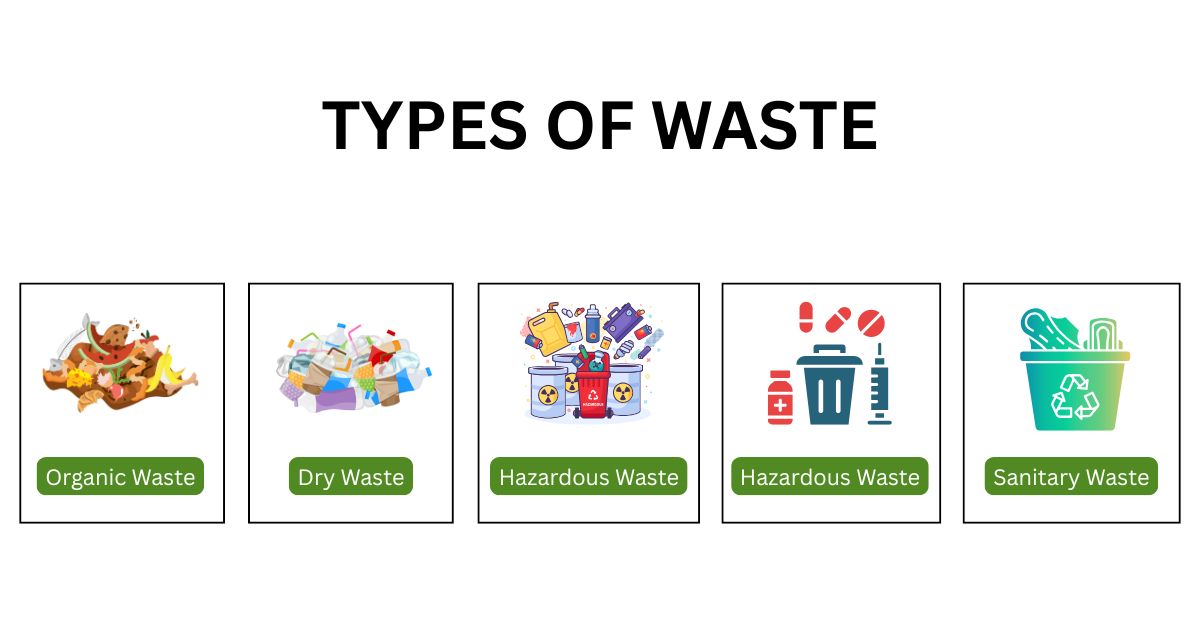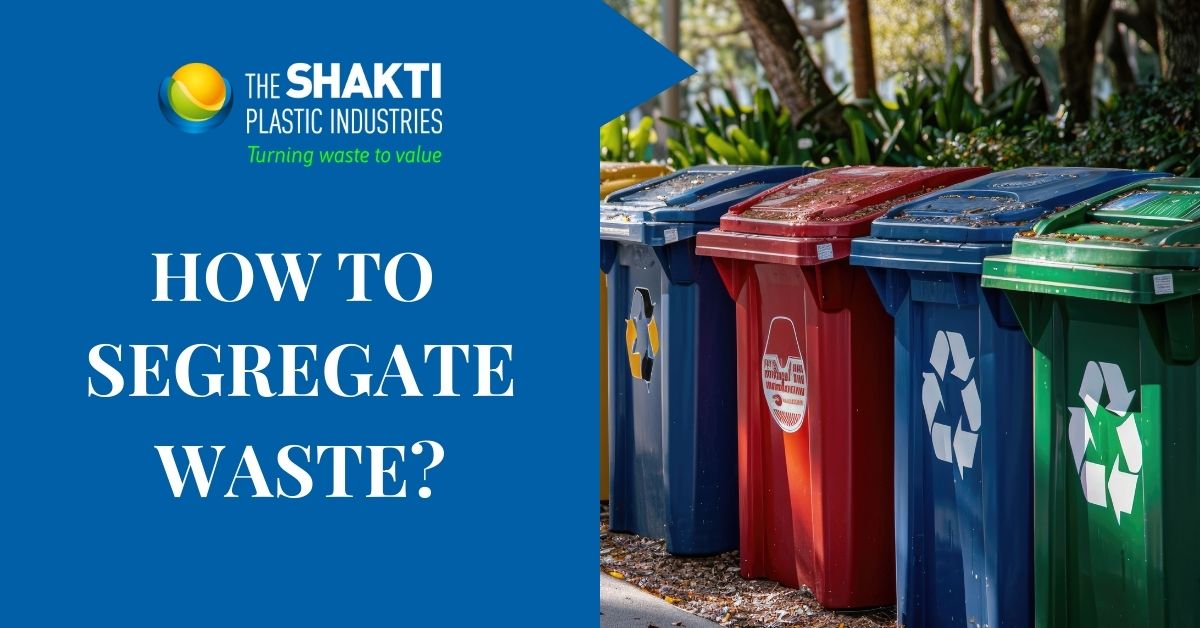What is Waste Segregation?
Waste segregation refers to the practice of sorting waste into different categories so that each type can be processed, treated, or disposed of appropriately. This could mean separating biodegradable food scraps from plastics or distinguishing medical waste from household garbage. The core idea? Not all waste is created equal, and treating it that way helps conserve resources, protect health, and reduce pollution.
In essence, it’s the first step towards effective waste management, making recycling and disposal safer and more efficient.
Waste Segregation Meaning in Hindi
In Hindi, waste segregation is called कचरा पृथक्करण (kachra prithakkaran). It literally means the act of separating waste materials. This phrase is commonly used in government campaigns across India to raise awareness about household and municipal waste separation.
Why Should We Segregate Different Types of Wastes?
 Well, why not just dump everything together and be done with it? Here’s why:
Well, why not just dump everything together and be done with it? Here’s why:
-
Recycling becomes easier and more effective
-
Hazardous waste doesn’t contaminate the rest
-
Composting wet waste reduces landfill load
-
Resources are conserved
-
It lowers the cost of waste processing
Improper segregation often leads to more pollution, inefficient recycling, and health hazards. Think of it as the starting point of the waste management journey.
Importance of Waste Segregation in Daily Life
Let’s face it: the Earth is not getting any younger. When we segregate waste:
-
Landfills live longer.
-
Our homes and streets stay cleaner.
-
Scavengers and sanitation workers are safer.
-
The environment breathes a little easier.
Just one person who separates dry and wet waste properly can make a huge difference over time.
Types of Waste: An Overview
 Understanding the types of waste is key to sorting it right:
Understanding the types of waste is key to sorting it right:
| Type of Waste | Examples |
|---|---|
| Organic/Wet Waste | Food scraps, peels, flowers |
| Dry Waste | Paper, plastic, glass, metal |
| Hazardous Waste | Paints, batteries, e-waste |
| Biomedical Waste | Syringes, expired medicines |
| Sanitary Waste | Diapers, sanitary napkins |
Each has its own disposal method and environmental impact.
Waste Segregation at Source
This is a fancy way of saying: “Sort your trash where it’s generated.” At your home, in your kitchen, school classroom, or workplace—segregate right there. When you do it at the source:
-
It prevents mixing of recyclable and non-recyclable waste.
-
Sorting becomes easier and more cost-effective.
-
Composting organic matter becomes possible.
How Can We Segregate Waste at Home?
Here’s a practical guide for beginners:
-
Use two main bins: green for wet waste, blue for dry waste.
-
Label the bins clearly.
-
Educate your family about what goes where.
-
Start composting kitchen waste like peels and tea leaves.
-
Keep a separate box for e-waste, bulbs, and batteries.
-
Rinse recyclables like cans and bottles before tossing.
The secret? Consistency and involvement of every household member.
Dry and Wet Waste Segregation
This is the core of daily waste sorting.
Wet Waste Includes:
-
Food leftovers
-
Vegetable and fruit peels
-
Used tea leaves
Dry Waste Includes:
-
Newspapers
-
Cardboard boxes
-
Plastic bottles
-
Metal cans
Wet waste can be composted, while dry waste can often be recycled or upcycled.
Garbage Segregation Do’s and Don’ts
Do’s:
-
Keep food and recyclable plastics separate.
-
Use color-coded bins.
-
Educate children early.
Don’ts:
-
Don’t wrap wet waste in plastic.
-
Don’t mix sanitary waste with dry waste.
-
Don’t throw batteries with kitchen waste.
Source Segregation in Schools and Workplaces
-
Place separate labeled bins in classrooms and offices.
-
Host segregation awareness drives.
-
Involve staff and students in regular waste audits.
-
Reward departments or classes that follow proper waste segregation.
Color-Coded Dustbins: Waste Segregation Made Simple

| Color | Used For |
|---|---|
| Green | Organic/wet waste |
| Blue | Recyclable dry waste |
| Red | Sanitary/hazardous waste |
| Yellow | Biomedical waste |
| Black | Non-recyclable residue |
These bins are often seen in hospitals, schools, and parks to make segregation easy and visual.
Dustbin Waste Segregation Chart
Create a wall chart or poster with icons and examples of what goes into each bin. This tool is super helpful for homes with kids or shared living spaces.
Waste Management Segregation Best Practices
-
Involve your local community.
-
Partner with local waste pickers.
-
Follow government rules and updates.
-
Compost or donate usable items.
How Municipalities Handle Segregated Waste
Once segregated waste is collected:
-
Wet waste is sent to composting units.
-
Recyclables go to sorting centers.
-
Biomedical and e-waste is handled by certified agencies.
-
Residual waste goes to engineered landfills.
Challenges in Waste Segregation
-
Public unawareness or apathy
-
Poor enforcement of segregation laws
-
Lack of bins or infrastructure
-
Contamination of recyclable materials
How Technology Aids in Waste Segregation
Smart bins, AI-powered waste sorters, and apps that guide what-to-throw-where are revolutionizing waste management in cities like Pune and San Francisco.
The Role of Composting in Wet Waste Management
Home composting kits make it easy to turn food waste into gold (well, compost!). Just mix greens (kitchen waste) and browns (paper, leaves), and turn it regularly.
How to Identify Hazardous Household Waste
Be cautious with:
-
Expired medicines
-
Bleach, cleaners, paints
-
Batteries and electronics
-
Nail polish, aerosols
They need special handling and disposal.
Eco-Friendly Packaging and Waste Reduction
-
Choose reusable over disposable.
-
Say no to single-use plastic.
-
Carry your own shopping bags.
Reducing waste means you’ll have less to segregate!
Myths About Waste Segregation
-
“It’s too complicated.” (Not really.)
-
“It doesn’t matter in the end.” (It does.)
-
“One person can’t make a difference.” (Every bit counts.)
How Schools Can Promote Waste Segregation
Start with:
-
Fun workshops
-
Waste segregation competitions
-
DIY recycling projects
Teach young, and they’ll carry the habit forward.
How to Encourage Waste Segregation in Communities
-
Host local cleanup events.
-
Provide dustbins and charts.
-
Collaborate with RWAs and panchayats.
Waste Segregation Rules in India
Under the Solid Waste Management Rules, 2016, every citizen is responsible for segregating waste at source into three streams—wet, dry, and domestic hazardous waste.
The 3 Rs: Reduce, Reuse, Recycle
-
Reduce what you bring in.
-
Reuse what you can.
-
Recycle the rest.
Segregation helps make this mantra a reality.
Economic Benefits of Waste Segregation
-
Saves municipal costs
-
Creates jobs in recycling and composting
-
Reduces material imports
Impact on Public Health and Hygiene
Less open dumping = fewer diseases = cleaner, safer communities.
Case Studies: Successful Waste Segregation Models
Cities like Indore and Pune have implemented decentralized waste collection and processing with great results.
Waste Segregation and Climate Change
Landfills emit methane—a potent greenhouse gas. Segregation keeps recyclables and compostables out of landfills, helping slow climate change.
How Children Can Learn About Waste Segregation
-
Storybooks, songs, and animated videos
-
Household tasks and mini-rewards
-
Eco-clubs and school drives
How Can We Segregate Waste
We can segregate waste by understanding its types, using proper bins, following guidelines, and creating awareness in our families and communities. It’s not just a civic duty—it’s a responsibility we owe to the planet and to future generations.
Conclusion
Waste segregation is the bedrock of sustainable living. It’s simple, it’s powerful, and it starts with you. By answering the question, how can we segregate waste, we unlock solutions to pollution, climate change, and community health—all from our homes.
FAQs
What is the easiest way to segregate waste at home?
Use two bins—green for wet and blue for dry waste—and clearly label them.
Can I mix sanitary waste with kitchen waste?
No, sanitary waste should be wrapped and disposed of separately.
Why is dry and wet waste segregation important?
Because it helps compost wet waste and recycle dry items without contamination.
What happens if we don’t segregate waste?
Recycling becomes impossible, landfills overflow, and environmental pollution increases.
Is waste segregation mandatory in India?
Yes, under the Solid Waste Management Rules, 2016.
How can kids learn waste segregation?
Through fun school programs, role-play, and rewards for sorting waste correctly.

